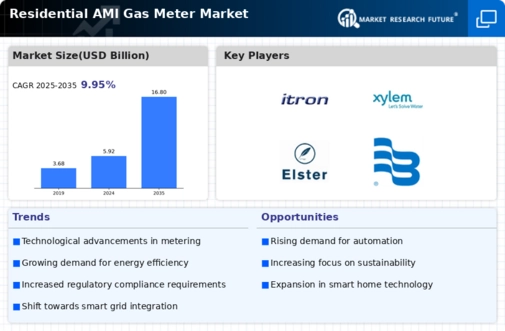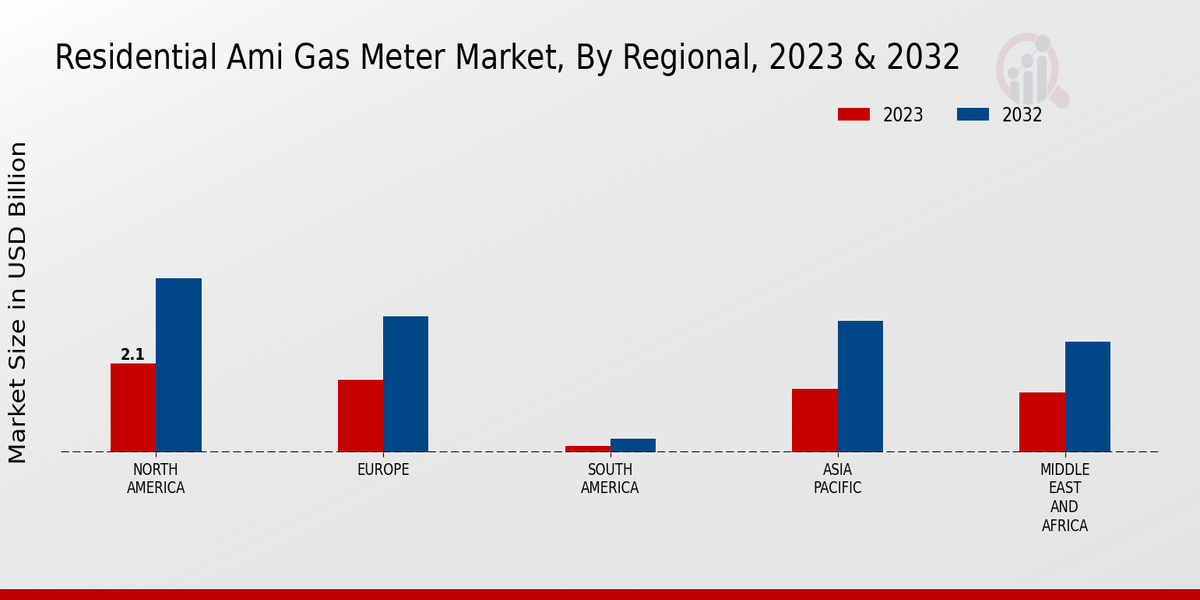Market Growth Trends (Charts Only)
Rising Consumer Awareness and Engagement
Consumer awareness regarding energy consumption and sustainability is on the rise, significantly impacting the Global Residential AMI Gas Meter Market Industry. As households seek to reduce their carbon footprint, there is an increasing demand for solutions that provide detailed insights into energy usage. Smart gas meters empower consumers by offering real-time data, enabling them to make informed decisions about their energy consumption. This heightened engagement not only fosters energy conservation but also encourages utilities to invest in advanced metering technologies. Consequently, the market is poised for growth, with projections indicating a substantial increase in value as consumers prioritize energy efficiency.
Government Initiatives and Regulatory Support
Government initiatives play a pivotal role in the growth of the Global Residential AMI Gas Meter Market Industry. Various countries are implementing regulations that mandate the adoption of advanced metering technologies to promote energy efficiency and sustainability. For instance, regulatory frameworks in regions such as Europe and North America encourage utilities to transition to smart gas meters. These policies not only support environmental goals but also enhance consumer engagement through improved billing transparency. As a result, the market is likely to witness substantial growth, with projections indicating a market value of 16.8 USD Billion by 2035, driven by supportive government policies.
Increasing Demand for Smart Metering Solutions
The Global Residential AMI Gas Meter Market Industry experiences a surge in demand for smart metering solutions, driven by the need for enhanced energy management and efficiency. As consumers become more conscious of their energy consumption, utilities are adopting advanced metering infrastructure to provide real-time data. This shift is reflected in the projected market value, which is expected to reach 5.92 USD Billion in 2024. Smart meters facilitate better resource allocation and reduce operational costs, making them an attractive investment for utility companies. The integration of IoT technology further enhances the capabilities of these meters, allowing for remote monitoring and management.
Technological Advancements in Metering Solutions
Technological advancements significantly influence the Global Residential AMI Gas Meter Market Industry, as innovations in metering technologies enhance functionality and user experience. The introduction of advanced sensors, data analytics, and communication technologies allows for more accurate measurements and efficient data transmission. These innovations enable utilities to optimize their operations and improve customer service. Furthermore, the integration of artificial intelligence and machine learning in data analysis offers predictive insights, which can lead to proactive maintenance and reduced downtime. As these technologies evolve, they are expected to drive market growth, contributing to a compound annual growth rate of 9.95% from 2025 to 2035.
Market Growth Projections and Investment Opportunities
The Global Residential AMI Gas Meter Market Industry is poised for robust growth, with projections indicating a market value of 16.8 USD Billion by 2035. This growth is fueled by increasing investments in smart metering infrastructure and the rising demand for energy-efficient solutions. Utilities are recognizing the long-term benefits of adopting advanced metering technologies, which not only enhance operational efficiency but also improve customer satisfaction. As the market expands, it presents numerous investment opportunities for stakeholders, including technology providers and utility companies. The anticipated compound annual growth rate of 9.95% from 2025 to 2035 further underscores the potential for growth in this sector.






